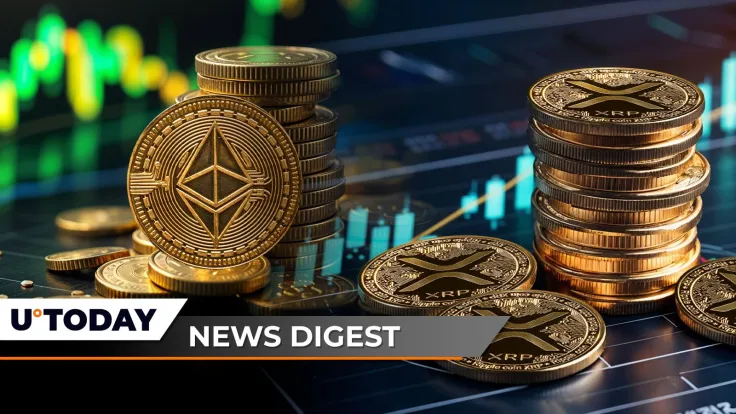Can Blockchain Help Deliver Universal Basic Income?
Table of Links
Abstract and 1. Introduction
- Stablecoins and Lending Markets
- Fixed-Rate Lending Protocols and Derivatives
- Staking Derivatives
- Staking Fees as Stable Interest
- Stabilization Mechanisms
- Some Caveats
- Diversification, Interest Rates Swaps, and Tranching
- Towards Universal Basic Income
- Closing Remarks
- Acknowledgements and References
9 Towards Universal Basic Income
We started by considering the high stable interests of decentralized finance protocols from the perspective of common household savers. Currently, few of them have access to investment opportunities with such stable high yield. However, the availability of these products will naturally also be accessible by the wealthier, seasoned investors too. Therefore, are they actually going to help the common household savers, or are they just going to make the rich richer still?
\ There are perhaps reasons to be optimistic (from an egalitarian perspective). The first is that even if these products do allow the wealthier to benefit, the margin of this benefit is unlikely to be as high as that for the common savers. That is because currently the savvy and capital-rich investors already have access to various high return investment options, including high-entry, actively managed hedge funds.
\ Secondly, with social and keyless wallets [54], one ultimate goal is to allow everyday smartphone users to be able to access decentralized finance applications securely with ease. For many of these new adopters, having access to such high stable return investment options will likely help level the playing field.
\ However, we must also acknowledge that it is not easy to foresee a future where such high-yield, lowrisk products will become commonplace. The impact of this for traditional financial products will lead to a chain of consequences that would ultimately depend on relatively unpredictable factors, including possible governmental intervention. Accordingly, we cannot expect that the lofty vision of universal basic income will naturally materialize out of market forces. Rather, we should see the availability of these new decentralized finance products as providing opportunities for such an agenda.
\ For example, there are already projects in the cryptocurrency space which aim at providing universal basic income to those who can prove their identity [55]. Capitalizing on the high yield generated by the Anchor, the Angel protocol [56] also allows charity donations to become virtually perceptual (as supported by the future yields). These may provide the platform for some universal basic income schemes to be implemented.
\ As a longer-term vision, radical markets [57] on blockchain can also help to enforce overall fairness.
\ Because of the permanent and immutable nature of transaction records in cryptocurrency ecosystems, taxation will eventually become automatically enforced, with evasion becoming extremely difficult. Importantly this can also open up venues for novel and interesting ways of redistributing wealth. For example, under a Harberger taxation scheme [57], the value of a property can be self-assessed, i.e. determined by the owner. The owner may be incentivized to not to overvalue the property, in order to minimize taxation. At the same time, transaction of the ownership can be made mandatory if any buyer offers a price above the self-assessed value. Therefore the owner should also not undervalue the property. With a well-defined true value to the owner, properties can be fluidly and fairly transferred. Economic analyses have shown that this can motivate and orchestrate the entire community into maximizing common good, while maintaining market efficiency. Similar mechanisms can also be implemented to implement highly progressive and quadratic wealth redistribution.
\ Importantly, even in the shorter-term, there is also an argument to be made that allowing the rich to become richer should not always be a concern, even for equalitarian purposes. An individual’s fixed or basic income may be dwarfed by the wealth of others, if such income is paid in a currency that is subject to inflation. If the rich can offer higher prices for goods, amid competition there may be a concern that one’s income may lose purchasing power. However, this would not be an issue if the basic income is to be paid out in a currency that is truly resistant to inflation. The US dollar is supposedly (loosely) pegged to the prices of goods. However, there has been criticism that the consumer price index (CPI) provided by the government is biased towards goods that do not truly reflect the quality of life of an average individual [58]. Currently, there are projects such as Frax’s stable peg and index which aim to rectify this situation [59, 60, 61], to create a stable currency in decentralized finance pegged not to the inflation-prone US dollar, but to a more meaningful representation of the true cost of living.
\ Imagine if a stable yield of as high as over 10% per annum is to be paid out in this inflation-resistant currency. With such a product, to support the universal basic income for a person’s lifetime, one would need a few times the individual’s annual living cost, as a one-time endowment. This is regardless of the future conditions of the economy, or how the wealthy may become richer - if the currency truly reflects the cost of living at the moment, in a stable peg. This could be the basis on which a meaningful universal basic income can be made feasible.
\
:::info Authors:
(1) Hakwan Lau, Center for Brain Science, Riken Institute, Japan (hakwan@gmail.com);
(2) Stephen Tse, Harmony.ONE (s@harmony.one).
:::
:::info This paper is available on arxiv under CC BY-SA 4.0 DEED license.
:::
\
You May Also Like

XRP Ledger Launches Its First Native Stablecoin: A Historic Milestone — Details
Bitcoin Crashes Below $103K as Traders Panic Over Fed's Shocking Announcement
